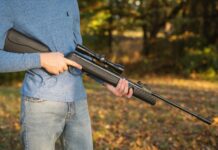 Amy Trubek
Amy Trubek
2004 | No. 68
The Shagbark Hickory Nut Is It the Finest Native American Nut?
By Amy Trubek
“They are the nobility of nuts,” the chef Odessa Piper says, “what the black truffle is to mushrooms.” Shagbark hickory nuts have “more flavor… more snap, more tooth-feel than either pecans or walnuts.” Unlike most nuts, toasting is required to intensify their flavor and create the shattering texture that makes them unique. Shagbark hickory (Carya ovata) is a relative of the pecan and a North American native, widely found in Ohio, Indiana, Illinois, Wisconsin, and Iowa. It’s hard to miss because the unique bark peels away from the tree in thin strips from six inches to four feet long. The trees are often found along roadsides. On the small dairy farms that dominate the rolling hills of southern Wisconsin, the cornfields and cow pastures mingle with stands of oak and hickory.
Gathering hickory nuts has long been part of rural Wisconsin family life. I went looking for hickory nuts late one fall, when the leaves had turned a vibrant mustard yellow. The nuts had dropped to the ground, their moist green husks now hard and black, having split open along four ribs to expose thin but strong inner shells. Several people told me that when they were young, their families would take a drive in the country and pull over when someone spotted a tree. The kids would pile out of the car and race to see who could pick up the most nuts the fastest. These people recalled with pleasure the nut’s luscious combination of sweet and smoky. But as to shelling… on that subject their eyes tended to glaze over.
Shelling the nuts is drudgery. Once the hard shell is broken, typically with a hammer, the meats have to be pried out. One serious harvester I met uses a dental pick. A pound of nutmeats takes a lot of cracking and picking and scraping — up to four hours’ worth — which explains why hickory nuts are rarely found in supermarkets or restaurants. Conventional wisdom in Wisconsin holds that this activity is for old-timers.
The main place to find shelled shagbark hickory nuts for sale is at farmers’ markets. At the one in Madison, various stands sell them. Harvey Ruehlow of the Nut Factory says, “The old guys are dying off, and the young people don’t have time.” He and his wife, Beverly, learned to forage and pick from Harvey’s dad, who loved to eat cinnamon rolls topped with chopped hickory nuts — it used to be that the nuts were used only for baking.
Note on toasting from Edward Behr
Eaten raw, shagbark hickory nuts have an echo of the curious rancid fruit flavor of another North American native, the black walnut — most people don’t like it. But shagbark hickory nuts respond unusually well to toasting, and they require a degree of it to taste their best. A mere light toasting causes the odd fruitiness to disappear and a superior taste to emerge, like a cross between a regular walnut and a pecan. Enough toasting also gives a satisfying, soft, oily crunch. The effect is so good that either the shagbark hickory or the wild pecan, another member of the hickory family, is the finest native North American nut. (A competitor, once, would have been the American chestnut, before the chestnut blight eliminated it.) To toast the nuts, heat the oven to 250 degrees F, spread them on a metal baking sheet or pan, toast for two minutes until they show some color, stir, and then toast for at least a minute or two longer. The longer the time, the stronger the flavor and the more crunch. Our small group of tasters preferred them after 10 or even 15 minutes. ● From issue 68











































